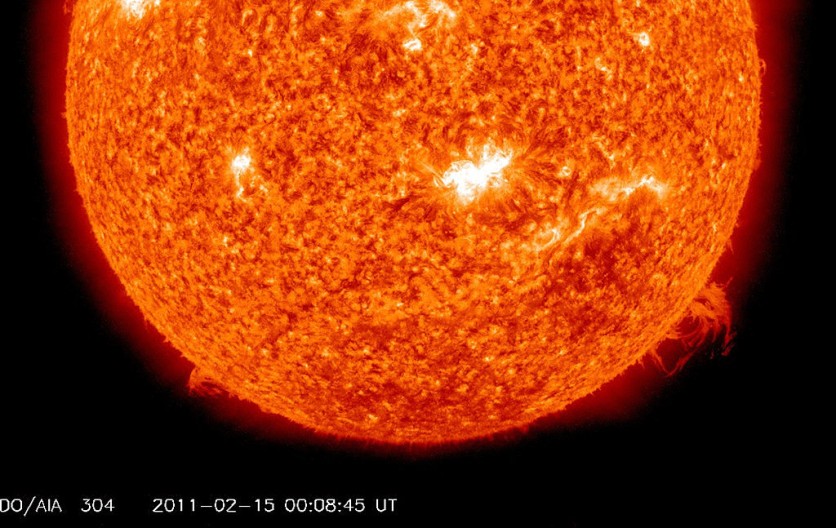NASA's upcoming CubeSat Radio Interferometry Experiment, known as CURIE, is poised to embark on a mission to unravel the mysteries surrounding solar radio waves.
Scheduled for launch on July 9, CURIE represents a pioneering effort to delve into the origins of these enigmatic waves emitted by the sun.

Unveiling the Mysteries of Solar Radio Waves
NASA noted that scientists first detected solar radio waves decades ago, linking their occurrence to phenomena such as solar flares and coronal mass ejections (CMEs).
These solar activities fascinate researchers and play a crucial role in space weather, impacting satellite communications and terrestrial technology. Despite these observations, the precise origins of these radio waves within CMEs remain elusive and constitute a significant puzzle in solar physics.
CURIE's mission objectives are grounded in the novel application of low-frequency radio interferometry, a technique never tested in space. CURIE will orbit Earth approximately two miles apart, featuring two independent spacecraft, each no larger than a shoebox.
According to NASA, this spatial configuration is critical for its instruments to discern minute differences in the arrival times of radio waves, thereby pinpointing their exact source within the solar environment.
Principal Investigator David Sundkvist from the University of California, Berkeley, underscores the mission's ambition and scientific potential. He noted that CURIE marks the maiden voyage of a controlled space-based radio interferometer, setting a precedent for future advancements in radio astronomy.
CURIE will operate beyond the Earth's atmospheric shield, equipped with instruments capable of detecting radio waves spanning frequencies from 0.1 to 19 megahertz. This capability is essential as these wavelengths are typically blocked by the upper layers of Earth's atmosphere, necessitating observations from space.
Read Also : NASA's Mars Odyssey Robotic Spacecraft Captures Never-Before-Seen View of the Solar System's Tallest Volcano
The Launch of CURIE
The launch of CURIE is slated aboard an ESA (European Space Agency) Ariane 6 rocket, scheduled to lift off from the Guiana Space Center in French Guiana. Once in orbit, approximately 360 miles above Earth, CURIE will set up communication with ground stations before initiating its operational phase.
The spacecraft will then maneuver into a circular orbit, where its dual eight-foot antennas will deploy to commence data collection. As the solitary payload on NASA's CubeSat Launch Initiative's ELaNa 43 mission, CURIE assumes the role of a pathfinder in space-based radio interferometry using CubeSat technology.
Beyond its primary objectives, CURIE sets the stage for the Sun Radio Interferometer Space Experiment (SunRISE). This forthcoming mission, employing six CubeSats, aims to map the solar radio wave origins in two dimensions, building upon CURIE's proof-of-concept.
Related Article : NASA's Hubble Space Telescope Captures Mesmerizing Image of Sweeping Spiral Galaxy 43 Million Light-Years From Earth

ⓒ 2025 TECHTIMES.com All rights reserved. Do not reproduce without permission.




